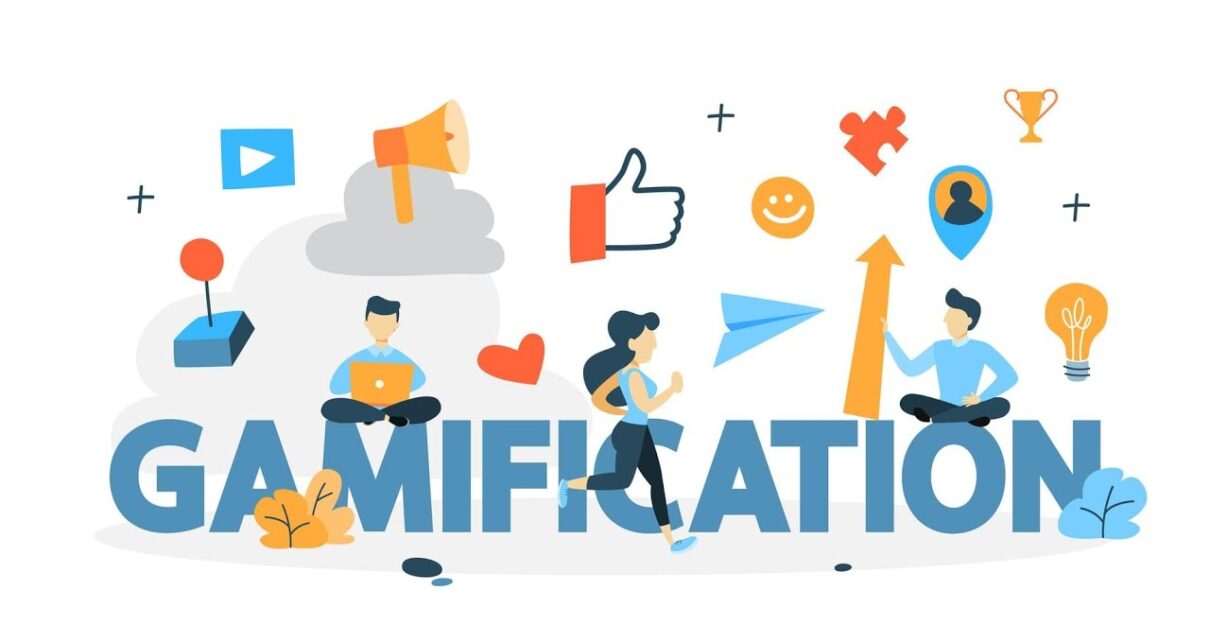Motivating employees and boosting productivity often feels like a puzzle with too many pieces. Traditional incentives can lose their charm over time, leaving you searching for fresh, effective strategies. What if the answer lies in something as engaging as the games people love to play?
The right gamification platform will transform a workplace by turning routine tasks into rewarding experiences. By blending game mechanics with professional goals, these platforms inspire your team to stay driven, collaborate better, and achieve more. It’s not just about fun; it’s about measurable results and a more motivated workforce.
If you’re looking to energise your employees and see tangible improvements in productivity, understanding how gamification works could be the game-changer your business needs.
A Closer Look at Gamification Platforms
Gamification platforms integrate game elements into workplace processes to promote engagement and drive results. By leveraging features like points, leaderboards, challenges, and rewards, these platforms create an interactive experience that encourages participation and goal achievement. They bridge the gap between routine tasks and employee motivation, transforming mundane activities into opportunities for recognition and collaboration.
You might notice that many gamification platforms focus on tracking and rewarding specific behaviours. For example, completing tasks on time, hitting sales targets, or participating in team activities could earn points or badges. This allows you to tie performance incentives directly to business goals while making outcomes transparent for everyone involved.
Customisation sets effective platforms apart. You can align game mechanics with your company’s objectives, making the experience relevant and engaging for your employees. For instance, setting unique milestones or introducing department-specific competitions can enhance both individual and team participation. Personalised dashboards might also help employees track progress, fostering a sense of ownership and achievement.
Analytics play an essential role in gamification. Platforms provide real-time insights into employee performance by tracking metrics like task completion rates, peer interactions, and engagement levels. By analysing this data, you can identify patterns, assess the effectiveness of initiatives, and adjust strategies accordingly. This ensures continuous improvement aligned with your organisation’s needs.
A social element adds depth to gamification platforms. Many systems incorporate features like peer recognition tools, collaborative challenges, or team-based leaderboards. These elements foster communication and camaraderie among employees as they work towards common goals. You might find workplace relationships strengthening as employees connect through shared aka chievements.
Scalability is another strength of these platforms. Whether your company is a startup or an enterprise, gamification solutions adapt to suit your needs. As your workforce grows, these tools expand to include new participants, challenges, and objectives seamlessly.
Would embedding a sense of accomplishment in everyday work benefit your team? If so, incorporating gamification may help reframe tasks and break departmental silos, creating a more dynamic and adaptive workplace environment.
Key Features Of Gamification For Employee Motivation
Gamification introduces structured game mechanics to workplace tasks, transforming how you engage employees. Below are the key features driving motivation and productivity.
Rewards And Recognition
Rewards give tangible value to your employees’ contributions. Points, badges, and monetary benefits translate traditional recognition into a dynamic system. By earning these, employees see clear connections between effort and reward. Recognition elements like leaderboards let you highlight achievers publicly, fostering positive reinforcement. This transparent approach ensures that exceptional performance gains visibility across your organisation. Tailoring rewards to specific roles or milestones also lets you align incentives with organisational goals while keeping employees motivated.
Progress Tracking And Feedback
Ongoing progress tracking helps you monitor employee achievements in real time. Dashboards displaying individual and team performance simplify how you measure goal progression. Clear milestones offer your employees actionable targets that keep them focused on objectives. Personalised feedback communicates where improvements are necessary while affirming successful behaviours. Analytics tools embedded in gamification platforms uncover performance trends, enabling you to adjust goals or strategies. Consistent feedback loops make employees feel supported, creating a culture of growth and accountability.
Competitive And Collaborative Elements
Gamification blends competition and collaboration to energise your workplace dynamics. Friendly challenges encourage employees to surpass peers while staying aligned with business goals. Leaderboards spark healthy competition by presenting results transparently and pushing individuals to improve consistently. Shared challenges and group targets foster teamwork while aligning personal success with collective achievement. Collaborative tasks offer opportunities for social connections, enhancing team cohesion. Together, these elements ensure employees remain deeply involved, building both motivation and strong working relationships.
Benefits Of Gamification In The Workplace
Gamification offers tangible advantages for the modern workforce by blending interactive mechanics with daily tasks. These benefits shape a more engaged, productive, and adaptable workplace culture.
Boosting Employee Engagement
Gamified environments motivate through engaging strategies like points and rewards. When tasks turn into challenges with visible progress, your team can feel energised to participate. Features that celebrate individual achievements, such as badges, promote connection by valuing contributions. Over time, employees might feel a heightened sense of purpose, driving consistent involvement in their roles. Interactive leaderboards can further encourage a focused yet friendly competitive spirit.
Enhancing Productivity
Structured gamification can align individual effort with measurable output. When you incorporate clear objectives, employees know exactly where to channel their energy. Tools like progress dashboards help monitor performance, keeping everyone accountable. Recognition systems, including goal-based rewards, push employees to stay on track and prioritise results. Real-time feedback ensures team members adjust faster to maximise efficiency, fostering an environment where you always strive to improve.
Encouraging Skill Development
Gamification supports learning through goal-setting and interactive tasks. You might observe employees tackling skill-focused challenges that promote mastery. Personalised training modules featuring rewards for progress enable continuous growth. Simulated environments or scenario-based challenges create safe opportunities for practise, building resilience against errors. These efforts encourage employees to acquire and refine skills over time, aligning individual strengths with organisational needs.
How To Implement A Gamification Platform Effectively
Integrating a gamification platform requires a strategic approach to ensure maximum engagement and alignment with your organisational vision. Focusing on key implementation steps can help you achieve seamless adoption and meaningful outcomes.
Choosing The Right Platform
Selecting a platform suited to your needs directly influences user engagement and success rates. Look for tools offering diverse features like custom rewards, behavioural analytics, and flexible integration. Platforms should also support scalability to accommodate both small teams and enterprise-wide deployments over time. Consider ease of use, ensuring your employees can interact with gamified elements without extensive training or technical barriers. Comparing vendors based on customer reviews and case studies can guide you towards making an informed choice.
Aligning With Organisational Goals
Platforms should align with the outcomes your organisation values, such as productivity improvements or enhanced collaboration. Define measurable objectives before implementation to tailor gamified elements such as badges or leaderboards effectively. Choose activities and metrics that reflect strategic priorities, ensuring employees see the connection between their efforts and business results. Reviewing goals periodically can help maintain alignment, as evolving needs require regular updates to the gamification strategy.
Encouraging Employee Participation
Employee buy-in drives platform success, so fostering enthusiasm early benefits adoption. Communicate how the platform enhances their growth through clear and transparent messaging. Introduce training sessions or demonstrations to familiarise teams with key functions, reducing any resistance to change. Promote inclusivity by designing challenges that cater to varied skill sets, ensuring everyone feels motivated to participate. Offering initial rewards for involvement might spark interest and sustain engagement over time.
Challenges And Solutions In Utilising Gamification
Resistance to Change
Employees might resist adopting gamification due to unfamiliarity or concerns about added workload. Resistance often stems from a lack of understanding or uncertainty about its purpose. You should communicate how gamification integrates seamlessly into daily routines without disrupting existing workflows. Offering initial training and addressing common misconceptions can foster higher acceptance levels.
Additionally, involving employees in the design of gamified elements might increase buy-in. Simple acts like soliciting feedback or customising features to suit team preferences can help create a sense of ownership. A transparent rollout process ensures employees feel included, not imposed upon.
Misaligned Objectives
Gamification can become ineffective if it doesn’t align with organisational or employee goals. When there’s a disconnect — such as focusing solely on competition without recognising individual contributions — it might demotivate rather than inspire. Your gamification strategy should integrate with the company’s values and expected outcomes.
Defining measurable objectives allows you to track progress while ensuring gamified tasks support overall business goals. For consistency, all elements — from challenges to rewards — should reflect both organisational priorities and employee aspirations. This creates a balanced, mutually beneficial system.
Lack of Engagement
Even robust gamification platforms risk failing if their features feel repetitive or irrelevant. Disinterest often occurs when employees don’t see personal value, or when the rewards seem unattainable. You can incorporate varied challenges, meaningful incentives, and real-time recognition to maintain interest.
Using a combination of collaborative and competitive features might energise participation. Activities such as team projects with peer recognition opportunities foster camaraderie, while leaderboards encourage personal achievement. Periodic updates prevent stagnation and ensure the experience feels fresh.
Overemphasis on Competition
Excessive focus on competition can negatively impact morale and teamwork. Overly competitive designs may alienate less assertive employees, creating tension instead of collaboration. You might balance competition with cooperative tasks where shared goals produce collective rewards.
Highlighting both group achievements and individual growth can promote inclusivity. Features like team-based challenges alongside individual progression tracking ensure everyone feels valued for their contributions. The goal is to create unity, not division, through gamification.
Data and Privacy Concerns
As gamification platforms collect user data, privacy concerns might arise among employees. A lack of clear policies regarding data handling can undermine trust. You should ensure transparency by explaining what data is collected and its intended use.
Deploying platforms with robust security measures protects both personal and organisational information. Let employees control specific data inputs when possible. Privacy-focused practices reassure participants that their information remains secure and appropriately managed.
Final Thoughts
Gamification offers a powerful way to transform your workplace by blending engagement, motivation, and productivity into a seamless experience. By leveraging the right platform and aligning it with your goals, you can create an environment where employees feel valued, challenged, and inspired to perform at their best.
When implemented thoughtfully, gamification becomes more than just a strategy—it fosters a culture of growth, collaboration, and achievement. With its potential to energise teams and drive meaningful results, it’s a tool worth exploring to unlock the full potential of your workforce.



